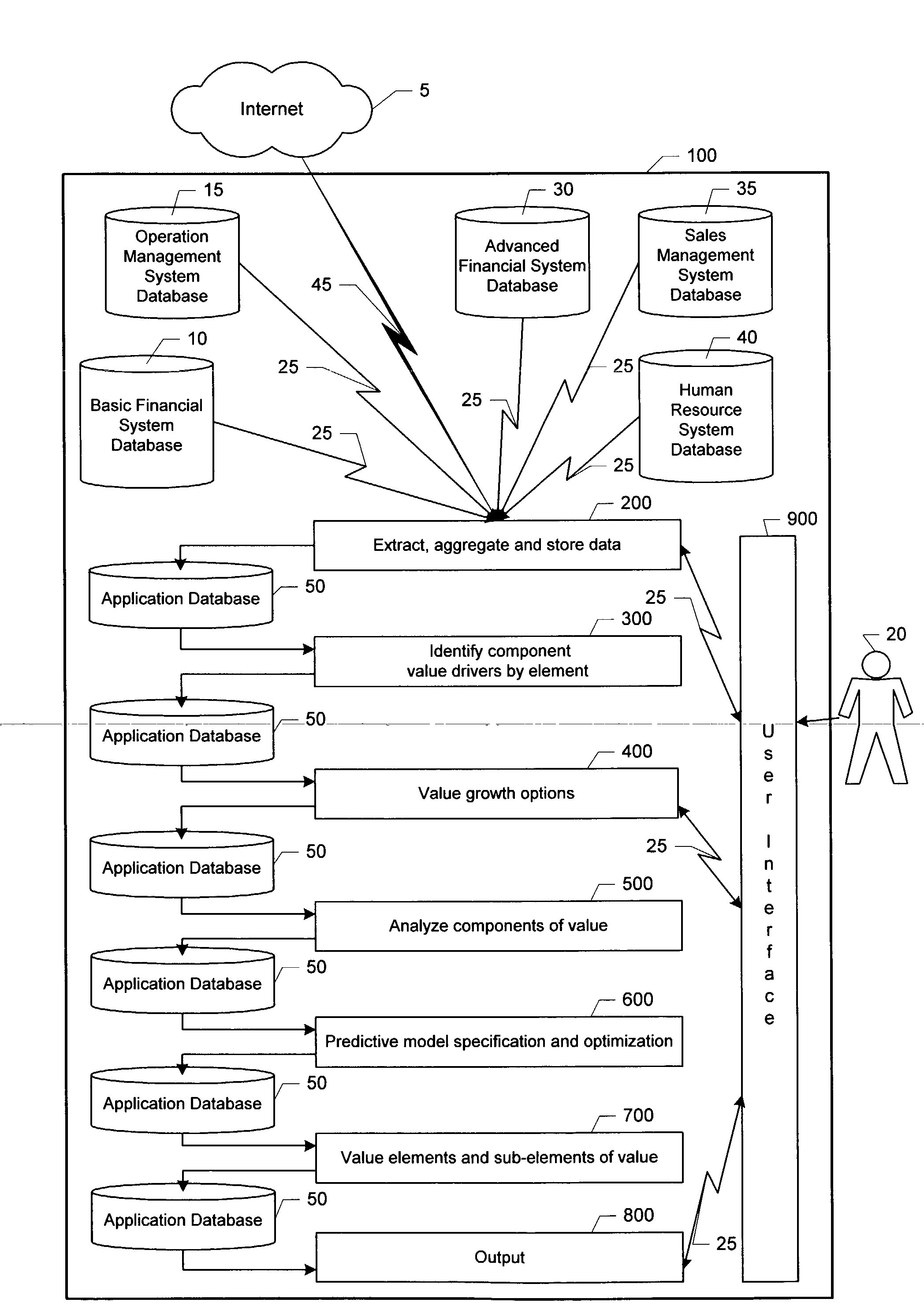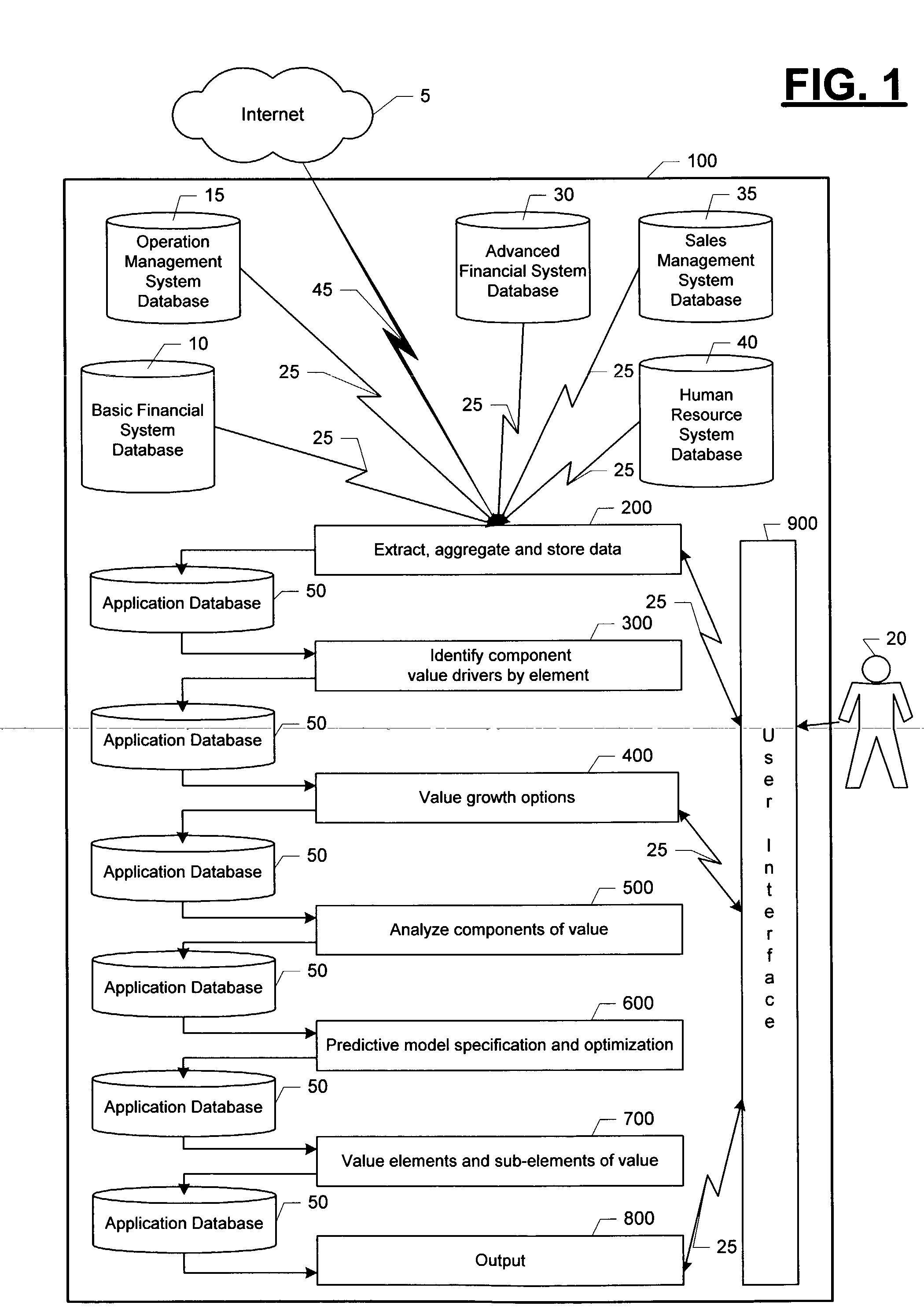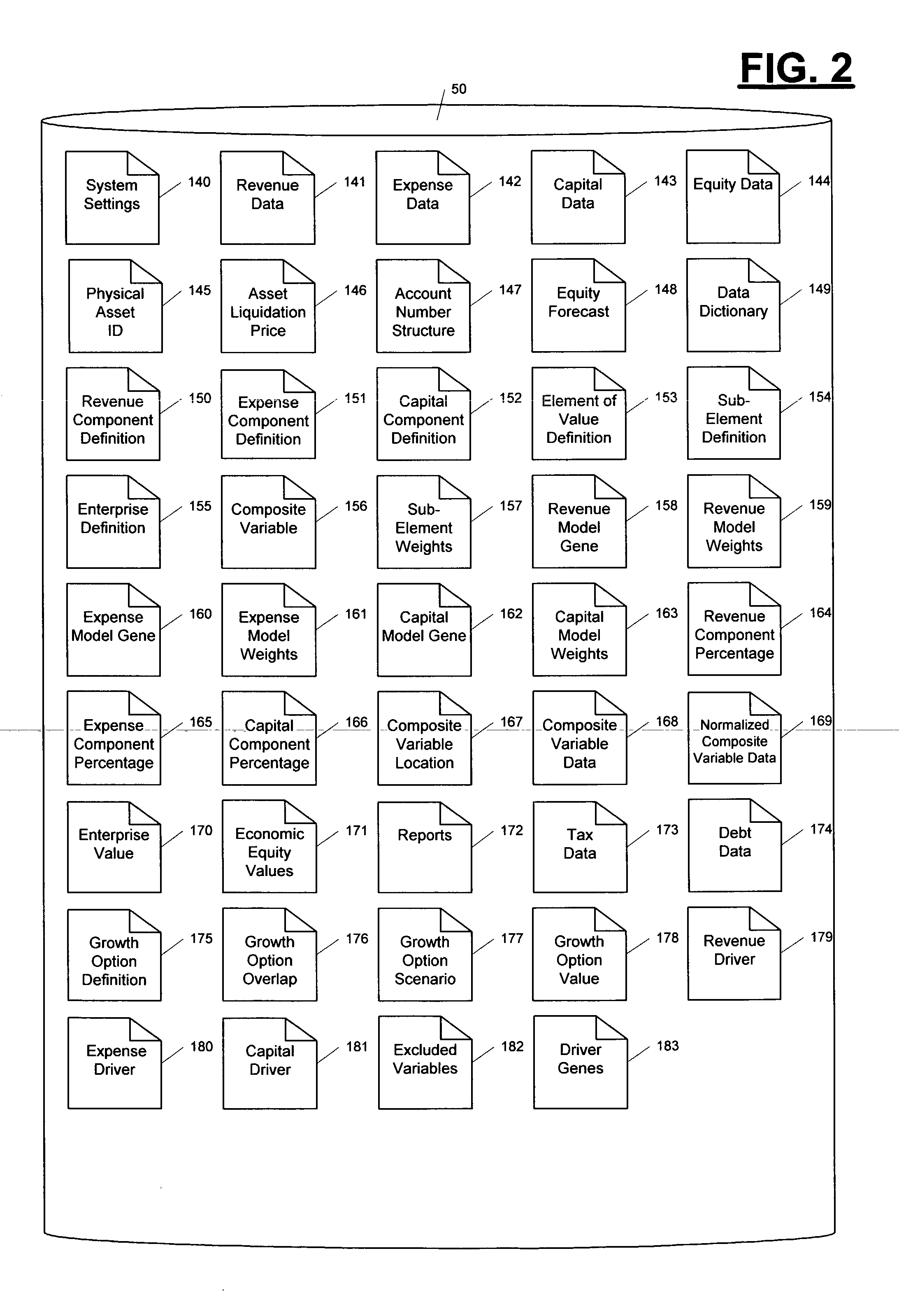Method of and system for analyzing, modeling and valuing elements of a business enterprise
a business enterprise and valuation technology, applied in the field of business valuation, can solve the problems of difficult and proper use of methods, limited use of methods, and complex and time-consuming undertakings for valuation of businesses, and achieve the effect of improving the value of an enterprise and facilitating its us
- Summary
- Abstract
- Description
- Claims
- Application Information
AI Technical Summary
Benefits of technology
Problems solved by technology
Method used
Image
Examples
Embodiment Construction
[0045]FIG. 1 provides an overview of the processing completed by the innovative system for business valuation. In accordance with the present invention, an automated method of and system (100) for business valuation is provided. Processing starts in this system (100) with a block of software (200) that extracts, aggregates and stores the transaction data and user input required for completing a valuation. This information is extracted via an interconnection network (25) from a basic financial system database (10), an operation management system database (15), an advanced financial system database (30), a sales management system database (35), and a human resource system database (40). Information can also be extracted from an on-line external database such as those found on an internet (5) via a communications link (45). These information extractions and aggregations are guided by a user (20) through interaction with a user-interface portion of the application software (900) that me...
PUM
 Login to View More
Login to View More Abstract
Description
Claims
Application Information
 Login to View More
Login to View More - R&D
- Intellectual Property
- Life Sciences
- Materials
- Tech Scout
- Unparalleled Data Quality
- Higher Quality Content
- 60% Fewer Hallucinations
Browse by: Latest US Patents, China's latest patents, Technical Efficacy Thesaurus, Application Domain, Technology Topic, Popular Technical Reports.
© 2025 PatSnap. All rights reserved.Legal|Privacy policy|Modern Slavery Act Transparency Statement|Sitemap|About US| Contact US: help@patsnap.com



